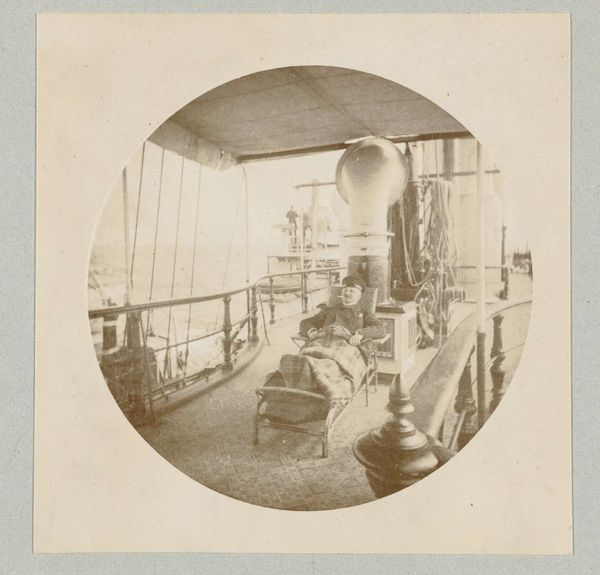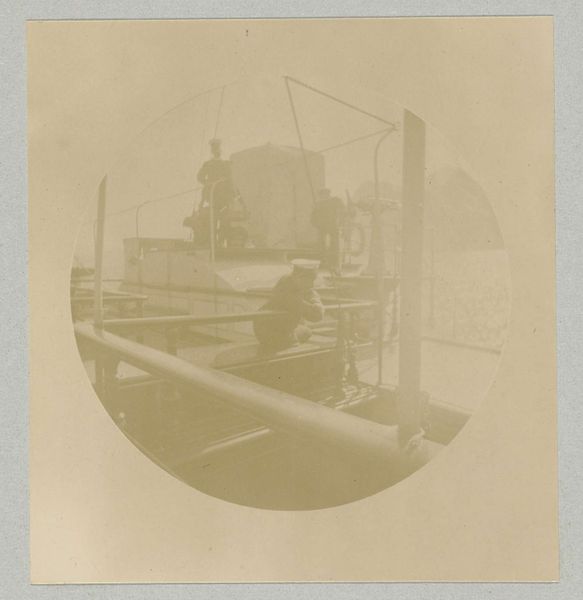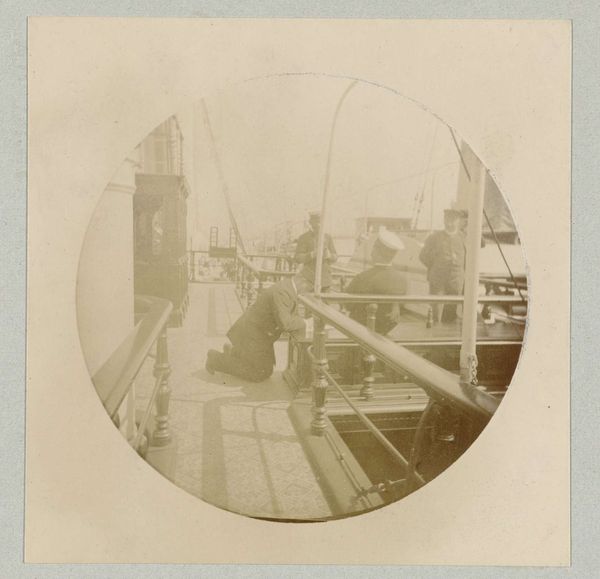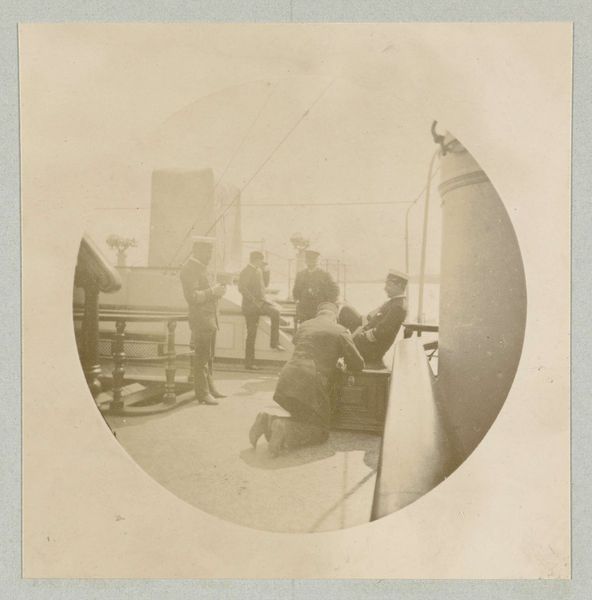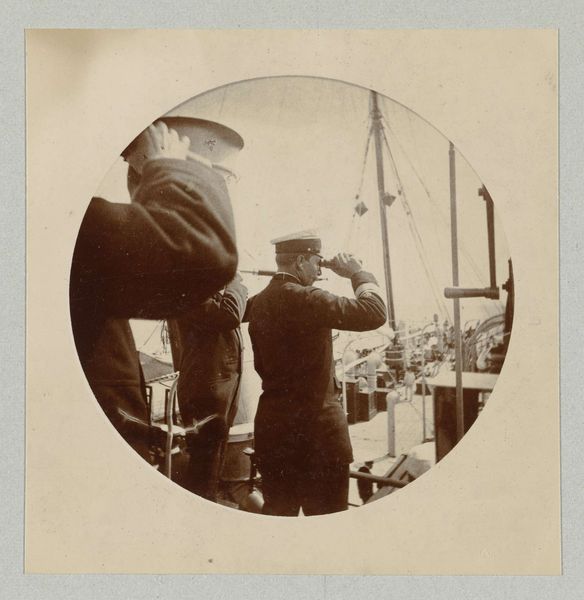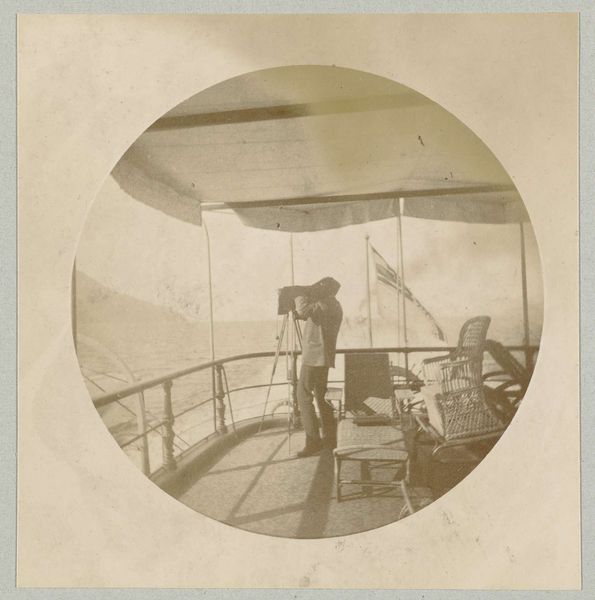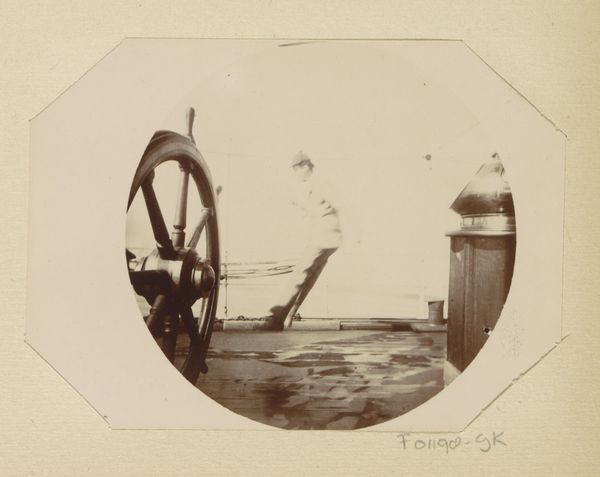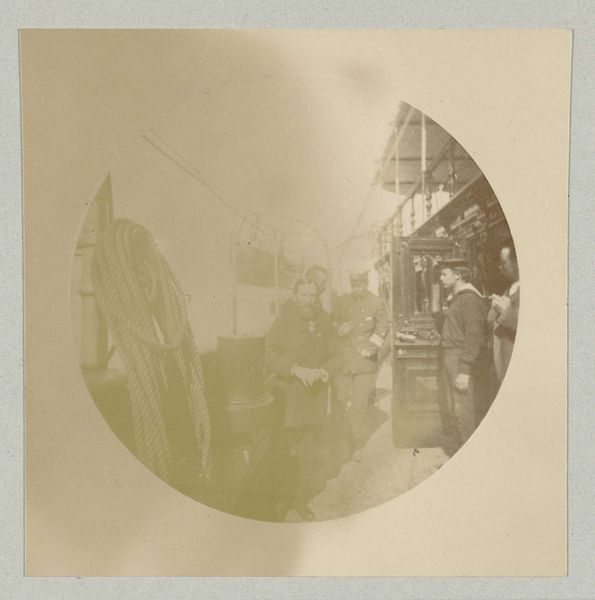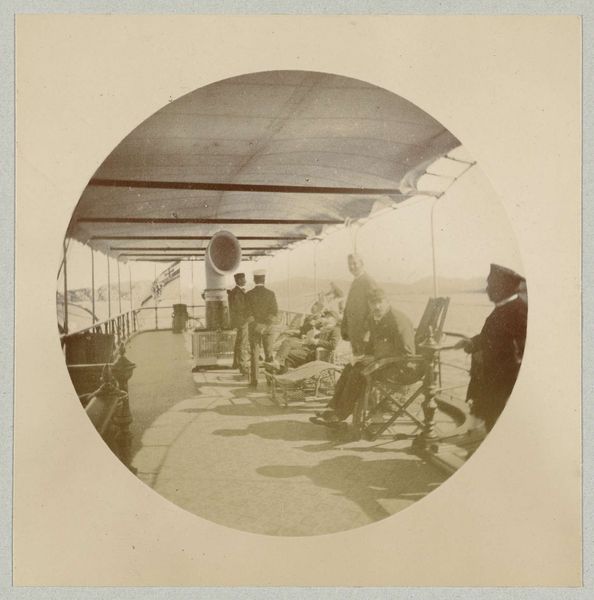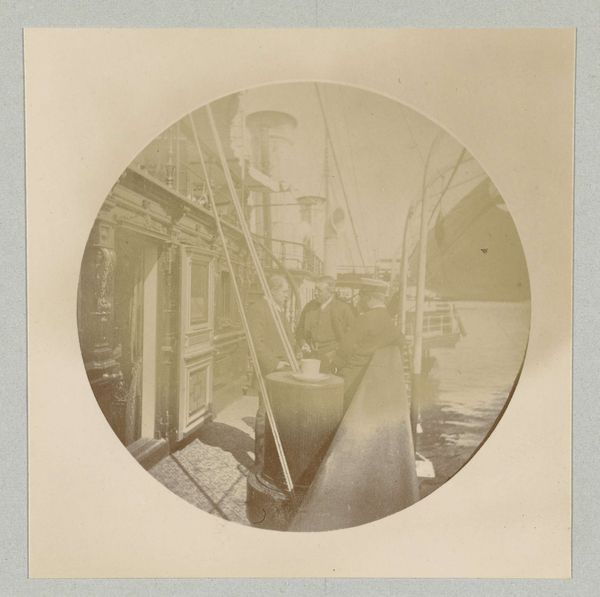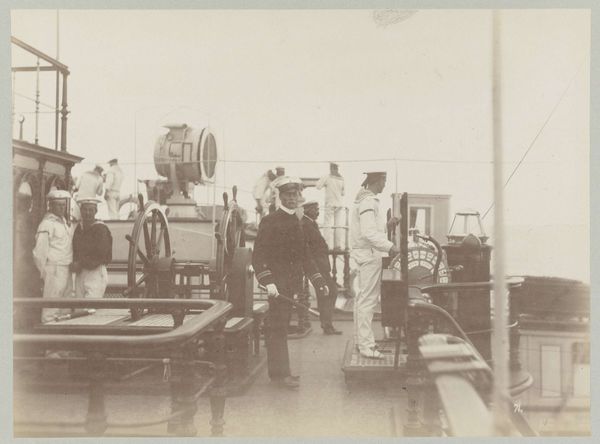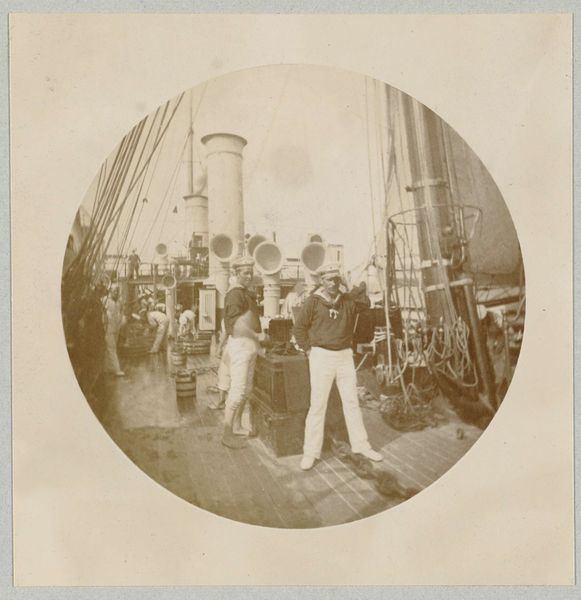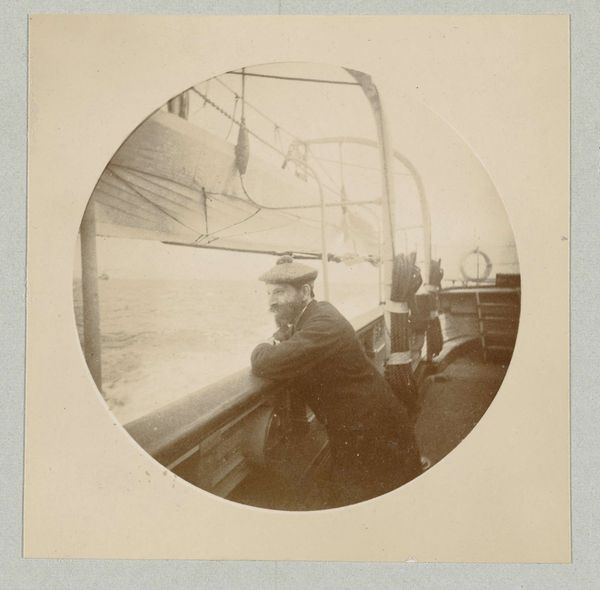
photography, gelatin-silver-print
#
portrait
#
photography
#
gelatin-silver-print
#
genre-painting
#
history-painting
#
realism
Dimensions: height 72 mm, width 72 mm, height 314 mm, width 450 mm
Copyright: Rijks Museum: Open Domain
Paul Güssfeldt captured this sepia-toned photograph, “Companions of Emperor Wilhelm II on board the Hohenzollern”, using the wet collodion process. This photographic method, popular in the late 19th century, required coating a glass plate with light-sensitive chemicals, exposing it in the camera while still wet, and then developing it immediately. The result is a unique, direct positive image with fine detail, as we can see in the textures of the naval uniforms and the ship's infrastructure. The tonality results from the chemical reactions involved in developing the image, and the silver particles suspended in the emulsion. The image’s presentation as a mounted print also speaks to the era, when photography was as much a craft as it was a science. Consider the labor-intensive process behind this image, from the preparation of the chemicals to the darkroom work. Understanding these material processes allows us to see beyond the photograph’s subject, and appreciate it as a crafted object.
Comments
No comments
Be the first to comment and join the conversation on the ultimate creative platform.
